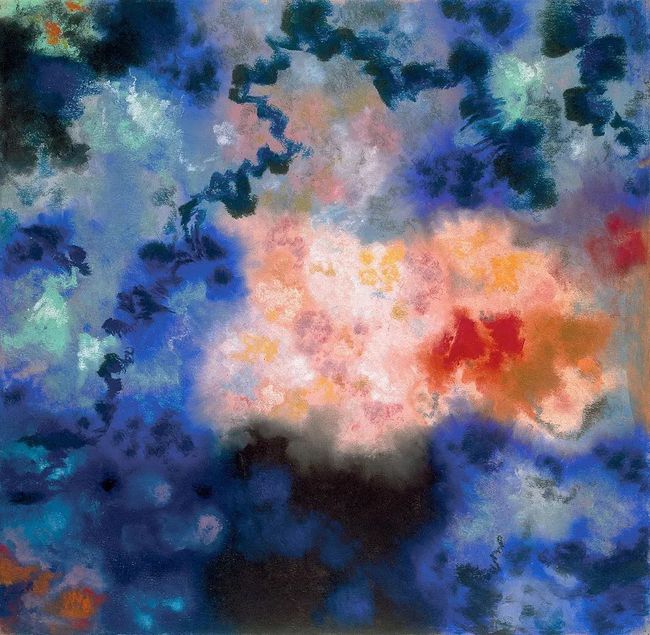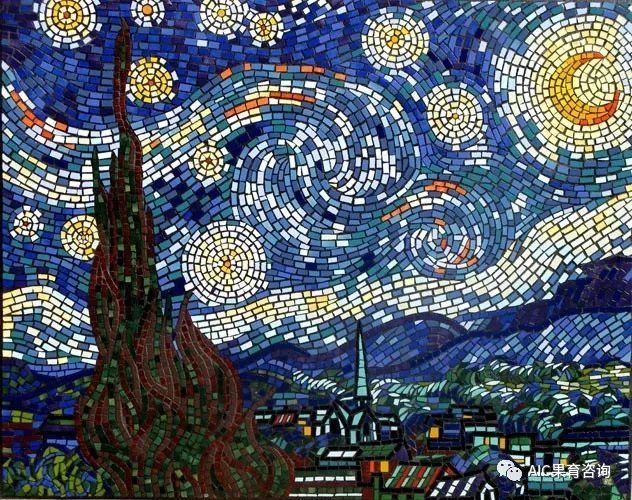Break the Bulletproof Glass
-Make paintings flow: impressionist paintings and mosaic art reimagined.
produced by: Siyuan Wu
First, a stupid magician story:
Let’s say it’s a weekend, you somehow wake up with tons of vitality and curiosity, so you improvise to go for a museum trip.
Luck is on your side, the exhibition is fantastic, everything seems inspiring. So on your way back home, you call your friend, who happens to be a magician, to share some thoughts. However, the annoying magician stops you, claims that he already knows what you saw in the museum. Of course you don’t believe him, but here he goes:
“You saw railings, everywhere, keeping you 2-meters away from the exhibits,
You saw glasses, right between you and the exhibits,
And signs of course, which says:
No photograph,
Do not cross,
No touching,
Or even: Do not touch the glass.”
“What’s your point?” You shout, angrily.
“Did you know that 4 months ago, someone auctioned off the opportunity to watch the Mona Lisa without the bulletproof glass, for 98,000 US dollars?
What I’m thinking is, how much will it cost me to touch it?
Or scratch it?
Or wash off the paint on it and take it home with a bucket?”
Now, concept:
Art has been through several stages. At first, it was closely related to religion or royal, later the merchant class rise, making portraits of ordinary people popular, until recently it is considered that everyone should enjoy arts, the barrier for appreciating art has been lowered once again. By making this project “Break the Bulletproof Glass”, I am hoping to eliminate the distance between the viewer and the traditional art as much as possible, and providing interaction in a playful way.
The way to interact is aesthetically inspired by two existing art forms: impressionist paintings and mosaic art. The common point of them is, they both use a large amount of “dots” to build continuous colour blocks. Especially the impressionist paintings, many of them appear in a hazy or flowing form, for example, the famous Starry Night by Van Gogh, or another Swedish artist I found named Augusto Giacometti (the painter of the flower painting in the showcase video):
One of Augusto Giacometti's work
Mosaic art: Starry Night
At last, techniques:
Apparently, I am using the box2d engine. Ideally, in order to create a form of liquid, we can put thousands of tiny box2d circles into a box2d world so that they can step on each other, and the smaller the circles are (the more circles we put in the world), the rendering effect will be better, until we hit the performance boundary of the computer. However, I soon find out that the basic box2d circles are difficult to cope with the situation that all the circles being squeezed into each other under a severe impact. The gap between them disappeared, suggesting that they have invaded each other’s radius, which caused a significant frame drop. However, later I find out that the box2d particle system has a different method to calculate the distance between circles, therefore avoid this problem and runs smoothly.
Then I tried to minimise the radius of the circles, turns out 5 is the best my computer can handle, which is not as expected. The outcome looks more like stones rolling on each other rather than liquid, so I changed the method to “draw a thick line between the circles who are touching each other”, to simulate the lightness and surface tension of liquids.
Ways to interact:
Gravity: The iPad sending gyro messages to OpenFrameworks through OSC, setting it to the gravity of the box2d world.
Apple Pencil: An apple pencil is recognised as a mouse in the Apple sidecar system. When the apple pencil pressed on the iPad, it generates an invisible circle to push other circles away.

































































